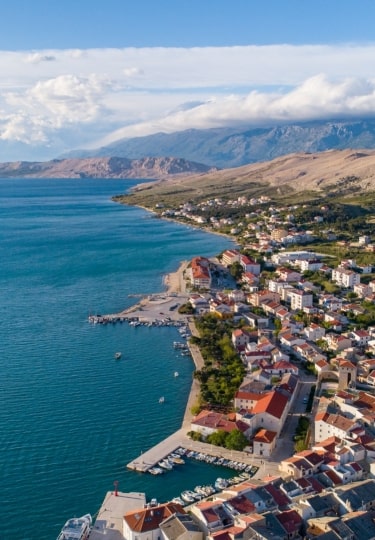Zadar, Croatia lies on the craggy north Dalmatian coast. The town is steeped in history, with its ancient center a network of Roman-laid cobblestone streets within UNESCO-listed, Venetian-built city walls.
Tranquil squares lined with an array of cafés and restaurants mixed with an assortment of museums and shops make Zadar’s compact old town a joy to explore. An atmospheric waterfront promenade wraps around the center, featuring interactive art installations and sweeping views of the rocky islands scattered just offshore.
Zadar also boasts easy access to enchanting national parks, white beaches, and rolling vineyards. An abundance of fresh produce from the land and sea, paired with delicious regional delicacies, means Zadar is also a top destination for food and wine lovers.
Why Visit Zadar, Croatia
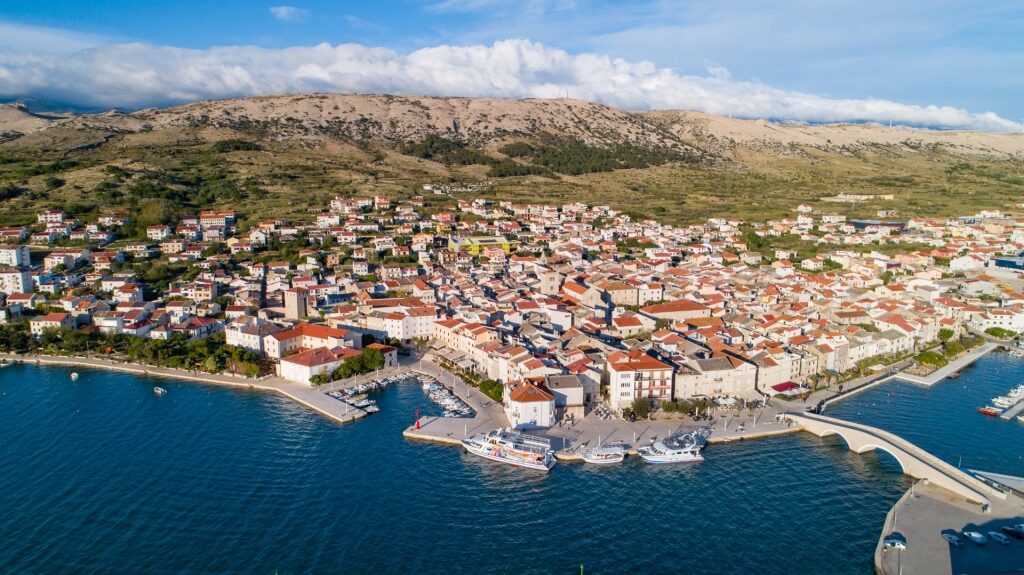
Zadar
Zadar’s spellbinding old town, mouth-watering cuisine, and blissful beaches are wrapped up in one of the most picturesque portions of the Dalmatian coast, making it the ideal destination for a quick visit or longer stay.
While Zadar more than delivers on culture and cuisine, on its doorstep you’ll also find some of Europe’s most beautiful natural landscapes—including four extraordinary national parks—with sun-baked islands and pine-clad mountain ranges a short hop from the waterfront.
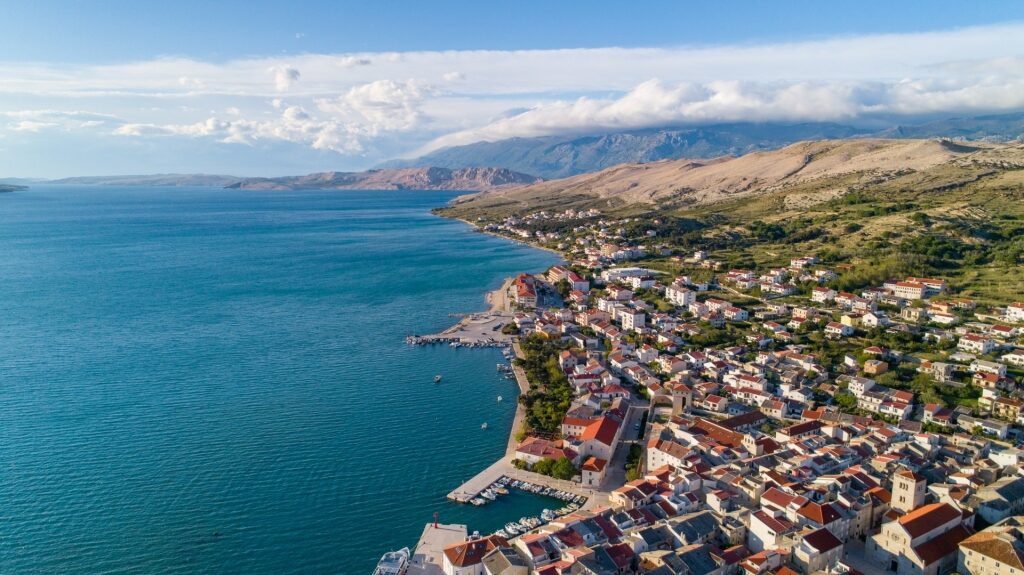
Zadar
From island-hopping and swimming to hiking and wine tasting, this underrated European city offers an activity for every type of traveler.
Another boon for travelers to Zadar is fewer crowds than those found in some of the eastern Mediterranean’s other major waterfront cities; somehow it’s a lower-key place than Dubrovnik and Kotor, and has a more local, authentic feel.
History & Culture
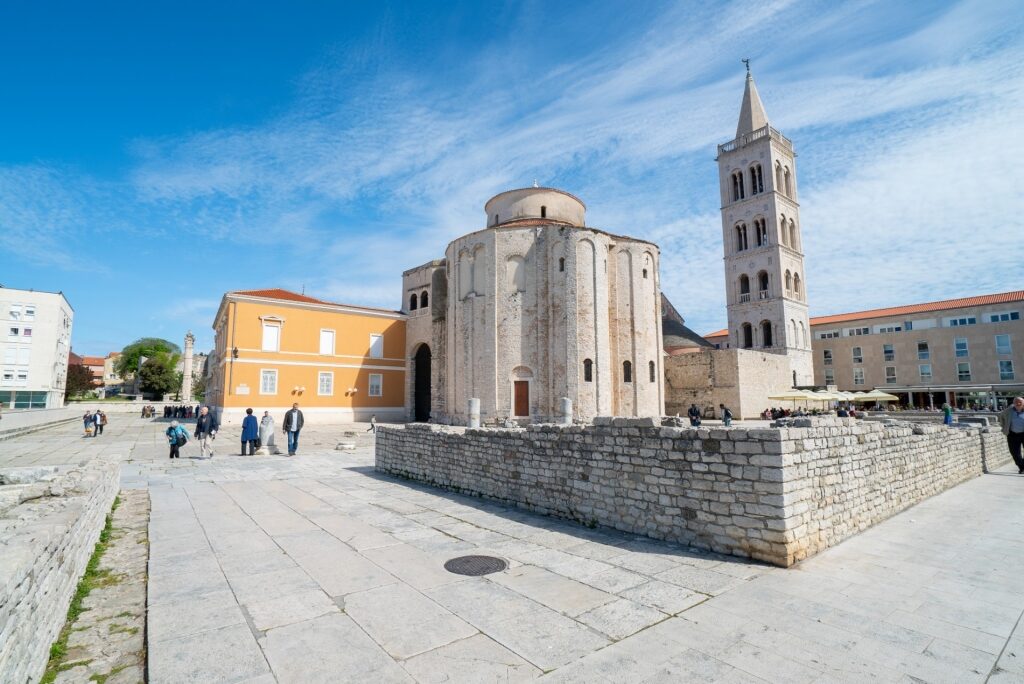
Church of St. Donatus
At the intersection of central and south-east Europe, Zadar is the oldest continuously lived-in city in Croatia. The city’s multi-layered and complex backstory dates thousands of years to the late Stone Age.
The Liburnian tribe inhabited this region of Croatia before being conquered by the Roman Empire in 48 BC. Zadar was also conquered by the Byzantine and Venetian empires, among others, with each period leaving a lasting trace on the Eastern European city.
Until the late 20th century Croatia was part of the Socialist Federal Republic of Yugoslavia (usually shortened to Yugoslavia), including the republics of Bosnia and Herzegovina, Macedonia, Montenegro, Serbia, and Slovenia.
When Yugoslavia disintegrated in 1991, a series of violent conflicts known as the Yugoslav Wars began in the region, lasting 10 years until 2001.
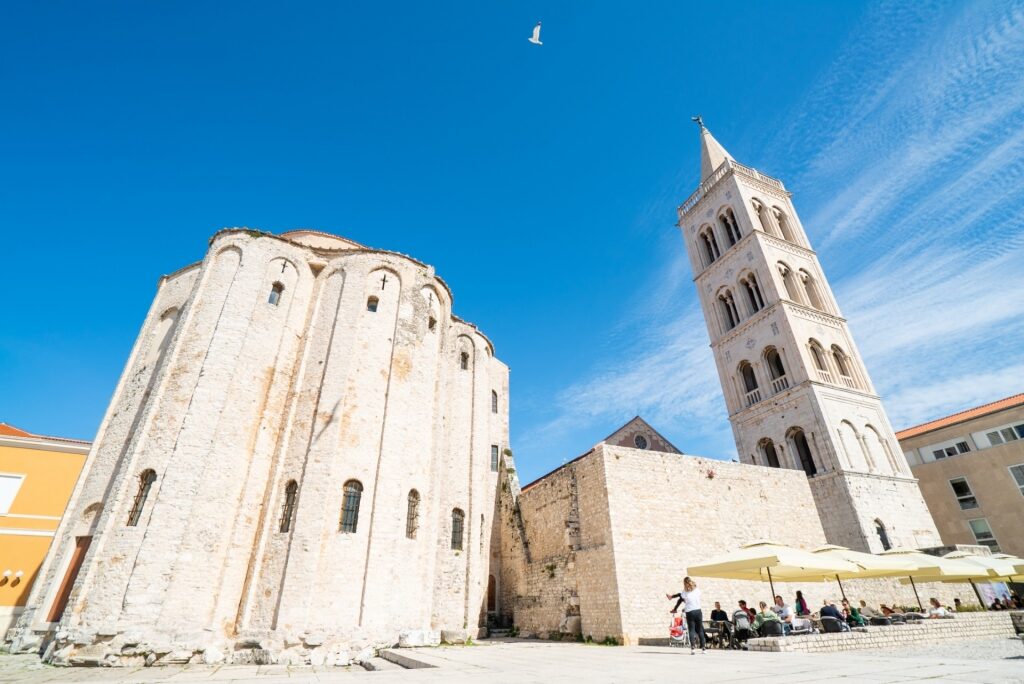
Church of St. Donatus
Today, Zadar is a city that proudly shows off its heritage. Spend time in Zadar’s terracotta-roofed old town, and you’ll feel as if you’re exploring an open-air museum crammed with relics, ruins, and elaborate churches at almost every turn.
A vast Roman forum and Byzantine-style churches stand shoulder-to-shoulder with alluring ice cream parlors, sophisticated bars, and some of the best Mediterranean restaurants this side of the Adriatic.
Wildlife & Nature
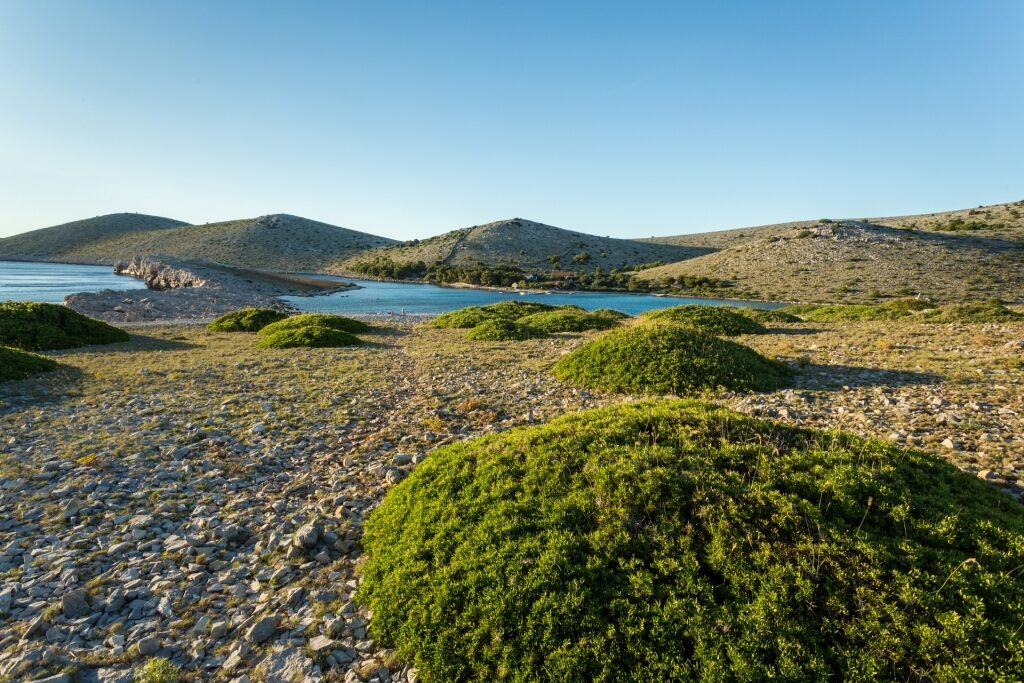
Kornati National Park
You don’t need to travel far to experience the nature and wildlife that Croatia is known for when visiting Zadar. The quickest way to immerse yourself in nature is to join a tour to explore Kornati National Park, an archipelago consisting of 89 bleached limestone islands and countless islets scattered across a steely-blue sea opposite Zadar.
The Kornati Islands are known for their bleak beauty, with little vegetation other than Mediterranean scrub, some wild herbs and the occasional hardy fig and olive tree.
Sailing, swimming, and snorkeling are all popular activities here, and there’s a good chance you will spot sea turtles, and possibly dolphins.
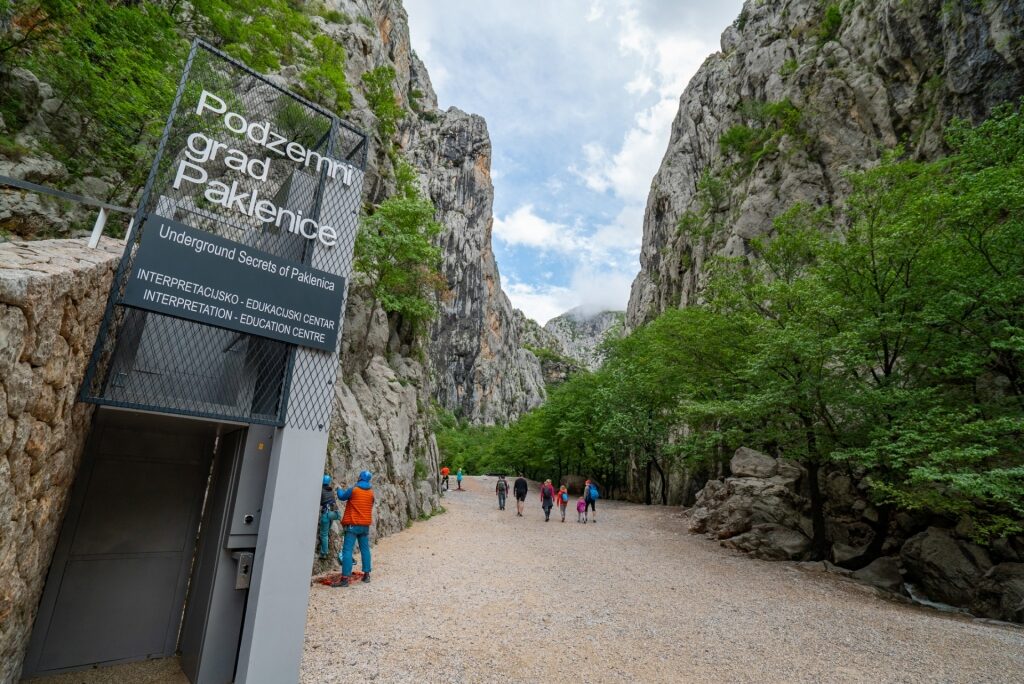
Paklenica National Park
Three more national parks in Zadar’s rich hinterland are within relatively easy reach. Home to sharp peaks and beech and pine-carpeted gorges, Paklenica National Park is less than 30 miles north of Zadar.
Plitvice Lakes National Park, a UNESCO World Heritage Site since 1979, is roughly a 90-minute drive inland and known for its shimmering emerald lakes and dramatic Croatian waterfalls.
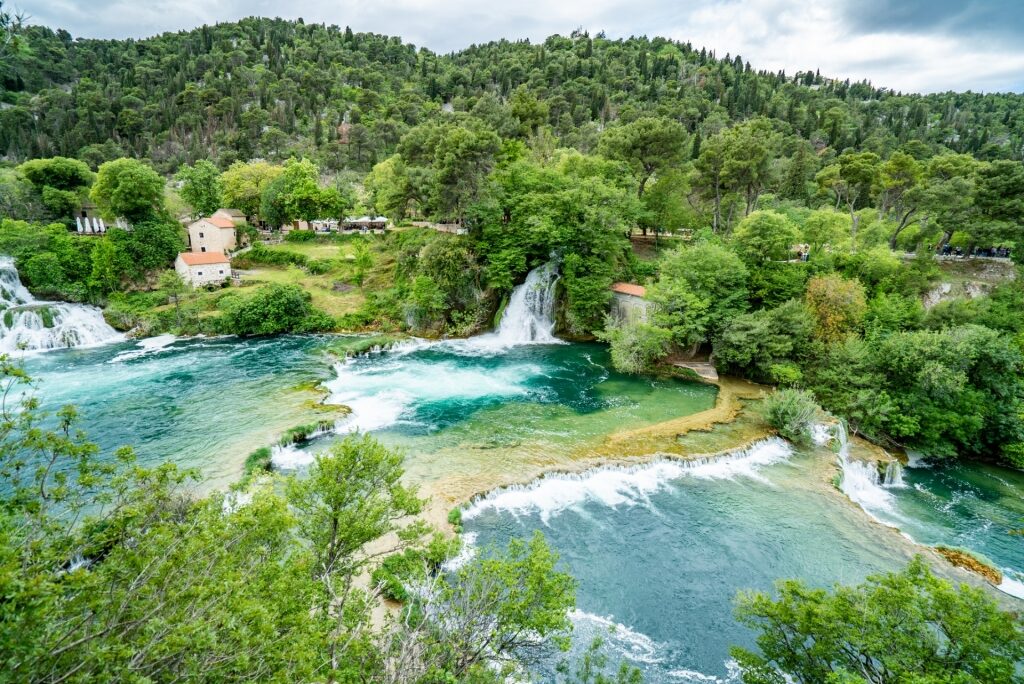
Skradinski Buk Waterfall
Located near Sibenik, the famous Skradinski Buk waterfall in Krka is one of Croatia’s most extraordinary places. Look out for an array of wildflowers, including purple chimney bellflowers and yellow-blossomed scorpion sennas. Krka National Park can be reached in under an hour.
Tips for Visiting Zadar
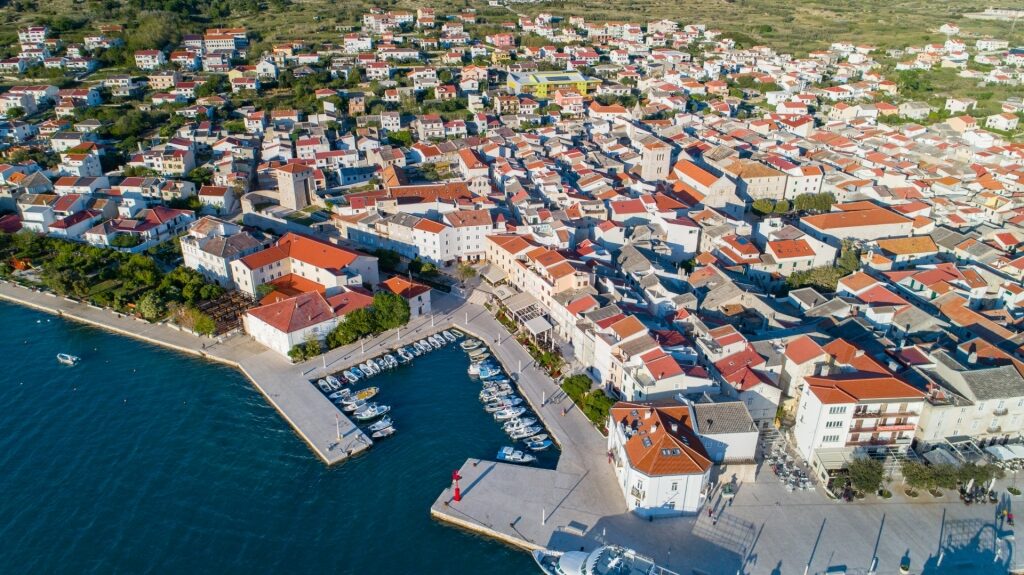
Zadar
The official language in Zadar is Croatian, though most locals speak excellent English. Although Croatia has been a fully-fledged member of the European Union since 2013, its currency is the Kuna, not the Euro, and is abbreviated to HRK.
It’s helpful to carry a small amount of spare change of local currency if you plan on tipping, though it’s not considered mandatory. Most souvenir vendors will accept Euros if you don’t have Kuna on hand.
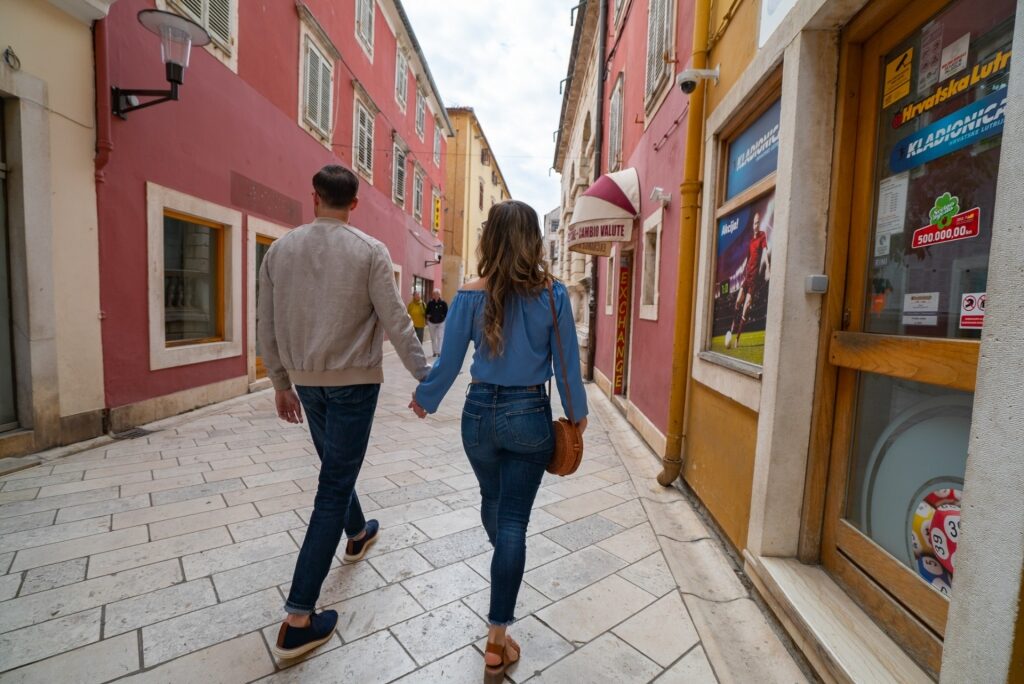
Zadar
Zadar is ideal for exploring on foot. In fact, it’s the only way to explore the city’s ancient center and the whole area is compact, including the arresting old town and the vibrant waterfront promenade.
With so much to see and do in and near Zadar, visitors are spoiled for choice, so plan your day carefully. If you’re hungry for culture, stick to Zadar’s old town and soak up the mix of Roman, Byzantine, and Venetian epoch architecture.
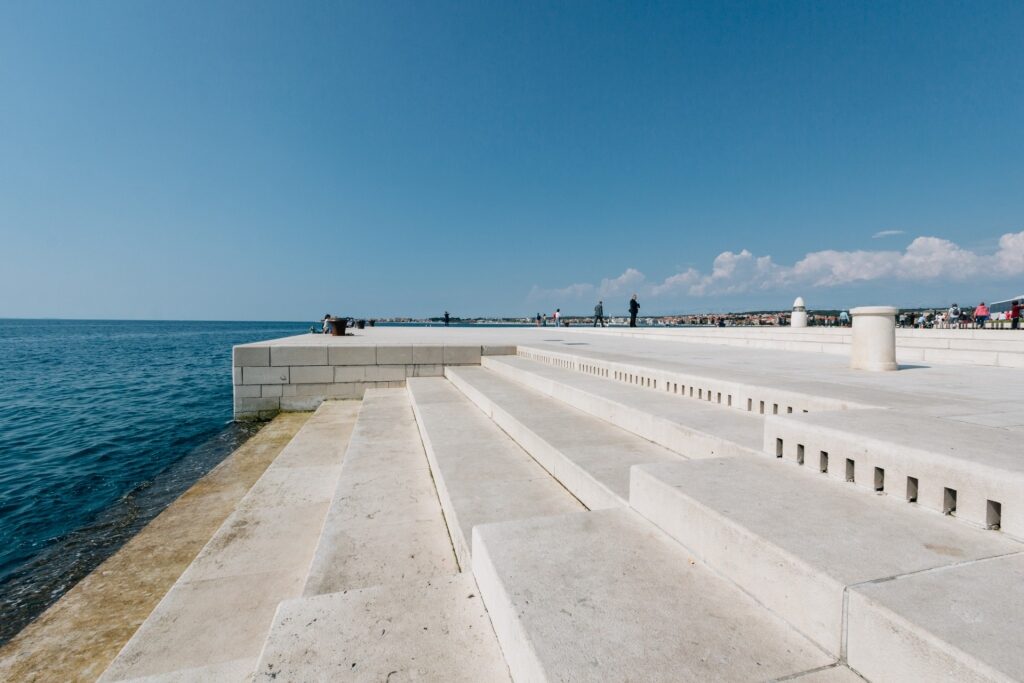
The Sea Organ
Don’t miss two of Zadar’s compelling modern art attractions on the waterfront. The Sea Organ, a sound-art object, uses crashing waves to create “music” (a strangely haunting array of sounds if you stop and listen carefully), and the solar-powered Greeting to the Sun displays a vivid light show in the evening.
If it’s nature you’re looking to uncover, you can enjoy an invigorating hike or wild swim in one of the city’s nearby national parks. For a lazy day on one of Zadar’s pebbly beaches, the only decision you’ll need to make is whether to stick to the mainland or catch a ferry to the islands.
Things to Do & Attractions in Zadar
Wander Around Zadar’s Old Town
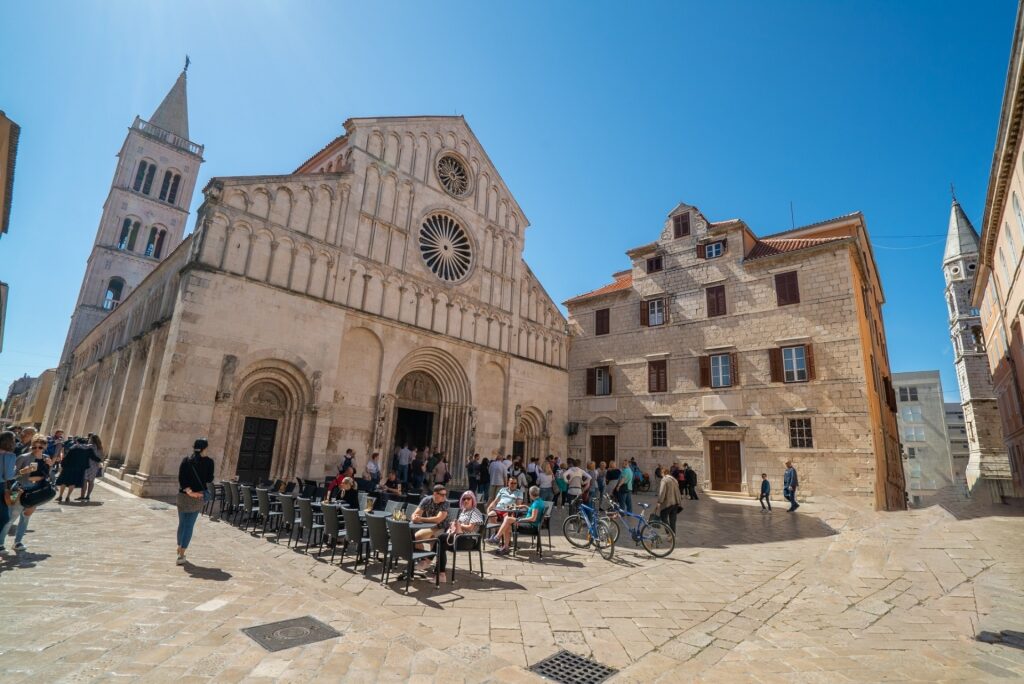
Cathedral of St. Anastasia, Old Town
Situated on a small peninsula, Zadar’s pedestrianized old quarter is one of the most captivating historical centers in Europe.
Take in the third-century Roman Forum and the remains of its once pearly-white columns. Next to the Forum is the 13th-century Romanesque cathedral of St. Anastasia, one of the best places to visit in Croatia.
Set over three floors, Zadar’s Archaeological Museum is next to the Roman Forum. It contains a treasure trove of relics from Zadar and the surrounding area, including an eight-foot, first-century statue of Caesar Augustus, the first Roman emperor.
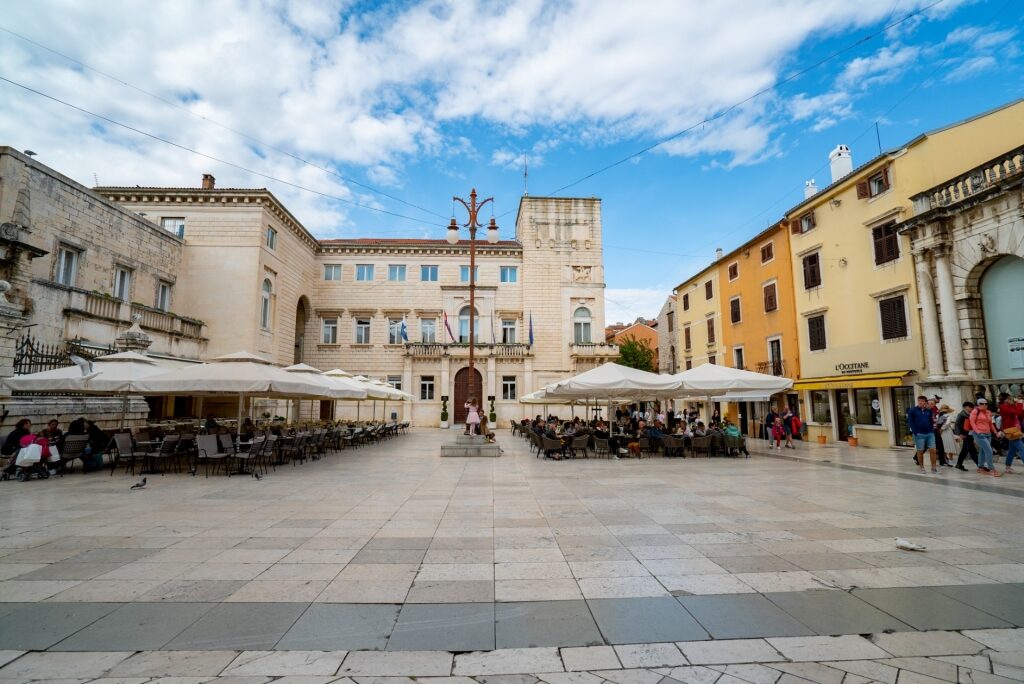
People’s Square, Old Town
Another highlight is People’s Square, surrounded by quaint cafés and souvenir shops. Next to the Square, weave through the bustling outdoor market, where you’ll find everything from olive oil to fresh bread, leather goods, and citrus fruits.
There’s even a L’Occitane en Provence outpost here so that you can stock up on lemon verbena-scented toiletries.
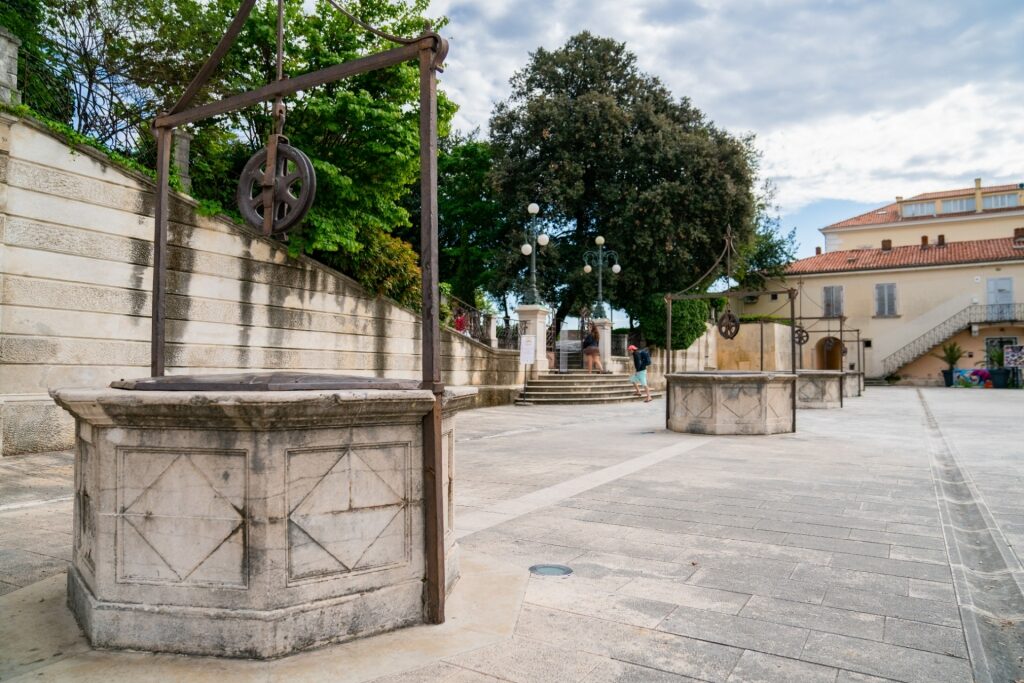
Five Wells Square
Head to Five Wells Square—named after the five 16th-century stone wells inside the piazza—at the southern entrance of the old town, and marvel at The Land Gate, the former main entrance to the walled city.
Many of Zadar’s best eateries are within the old town, from delicious taverns with leafy outdoor seating to chic restaurants serving modern Mediterranean cuisine.
Swim at Skradinski Buk Waterfall
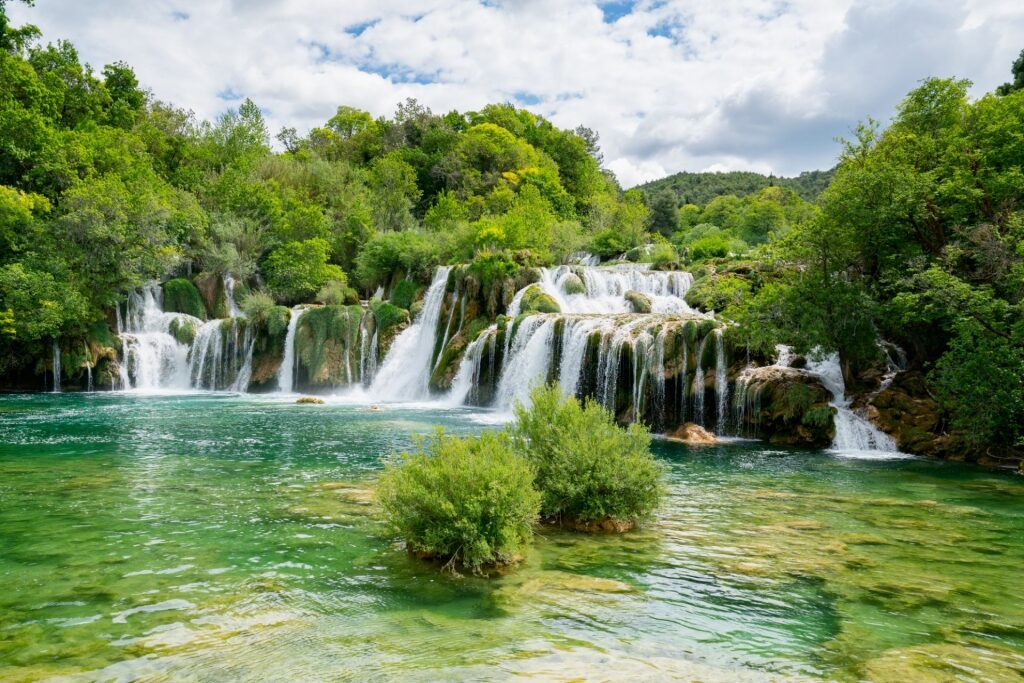
Skradinski Buk Waterfall
Not all waterfalls are created equal, and Skradinski Buk, on the Krka River, is arguably the most magnificent of the seven falls in Krka National Park.
Fifty miles south of Zadar, the foaming falls spread outward as they cascade down 17 natural steps of gypsum (a soft sulfate mineral). This fairytale scene makes it one of the best places to visit on a honeymoon in Croatia.
There’s a natural pool of crystalline water at the bottom of the falls, although you’re no longer allowed to swim in it; just cool off in the spray instead. Adding to the serenity of Skradinski Buk is Krka’s dense green forest, with hiking routes around the park for active visitors to discover.
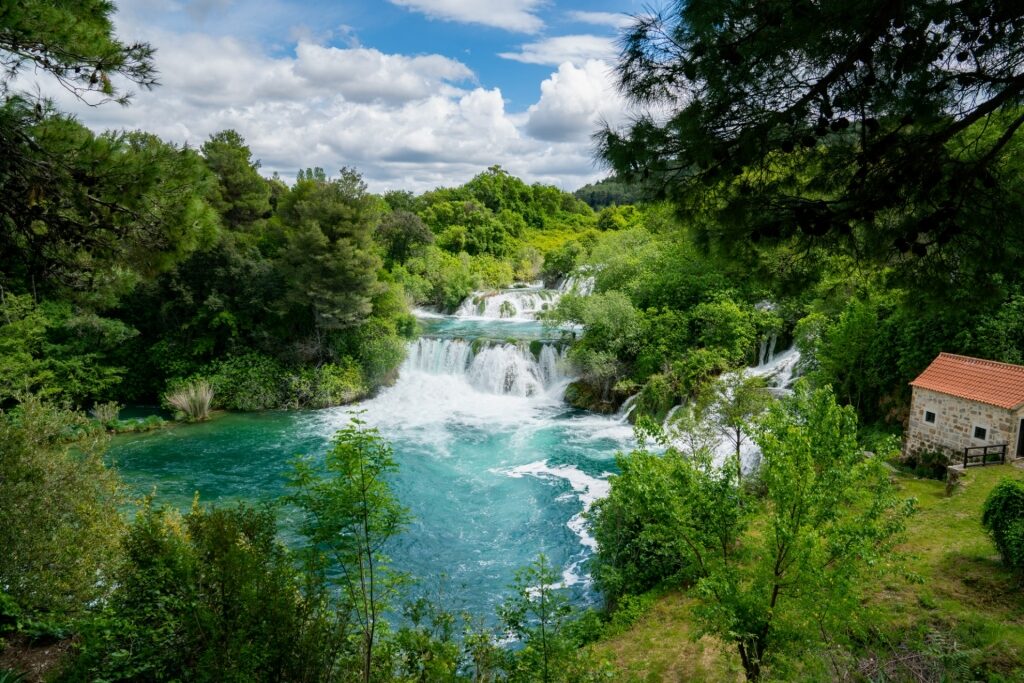
Skradinski Buk Waterfall
Look out for the park’s pretty flora, with a carpet of wildflowers adding color during summertime. Several freshwater fish, including Adriatic salmon and Dalmatian barbel gudgeon, can be found in the river.
Relax on Borik Beach
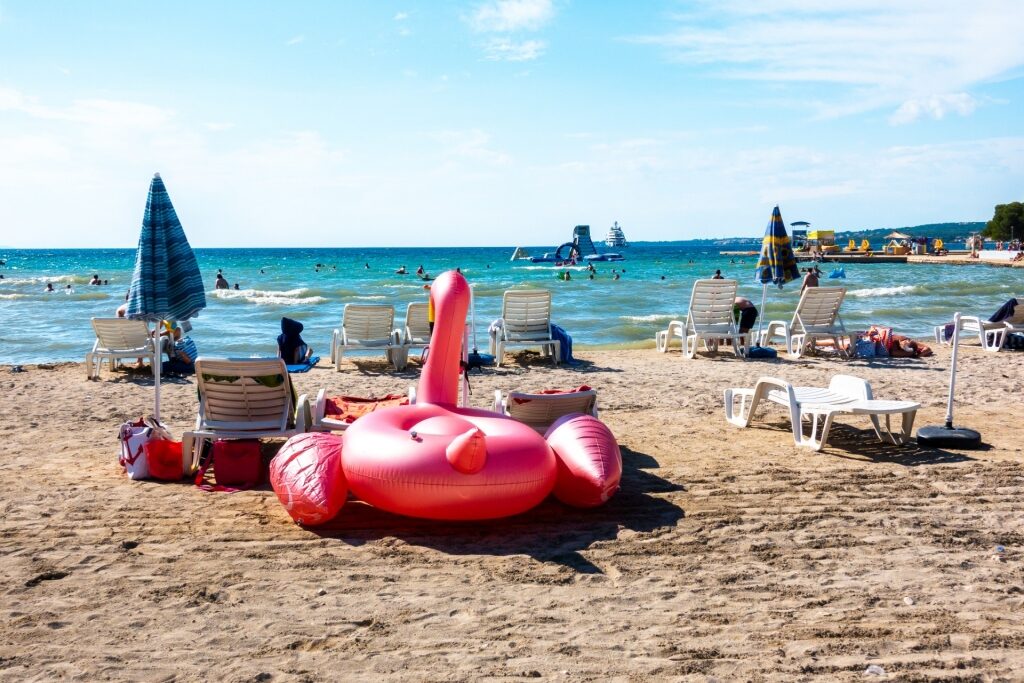
Borik Beach
While most beaches near Zadar are covered with pebbles, Borik offers a sweep of soft sand to dig your toes into, a 10-minute taxi ride north of the historic center.
This buzzy spot is fringed with pine trees and hotels. Sun loungers and jet skis are available to hire on the shore. Borik is popular, especially in the peak of summer, so arrive early to secure a sunbed.
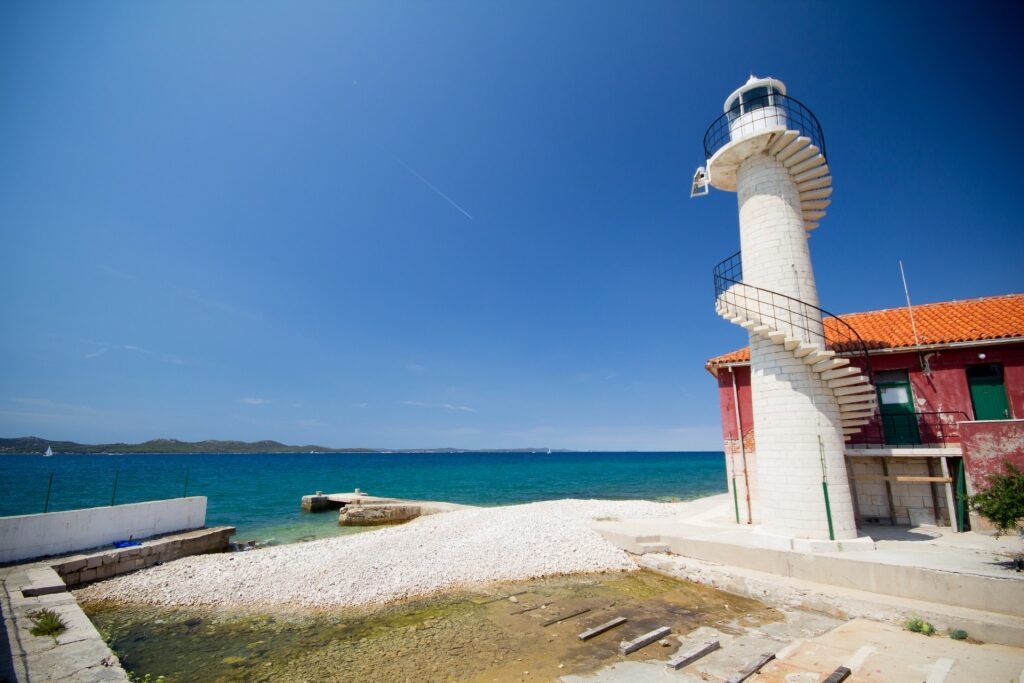
Puntamika Laterna Lighthouse
Once you’ve enjoyed a cooling swim in the blissful turquoise water, embark on a short walk to the handsome Puntamika Laterna Lighthouse, stopping for a well-deserved, post-swim cocktail at the neighboring Beach Bar Bamboo.
Read: Best Beaches in the Mediterranean
Hike Through Paklenica National Park
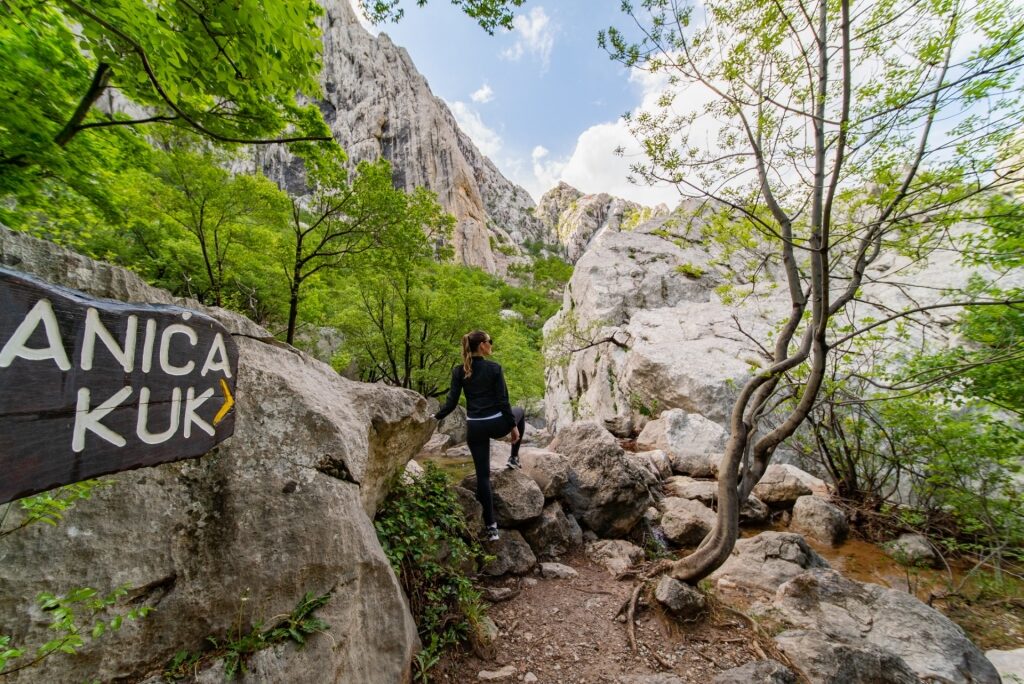
Paklenica National Park
If you’re keen to connect with nature, consider a 45-minute jaunt inland to Paklenica National Park for a rewarding hike. Regarded as one of the best national parks in the world, Paklenica National Park lies within the Velebit mountain range, the largest in Croatia.
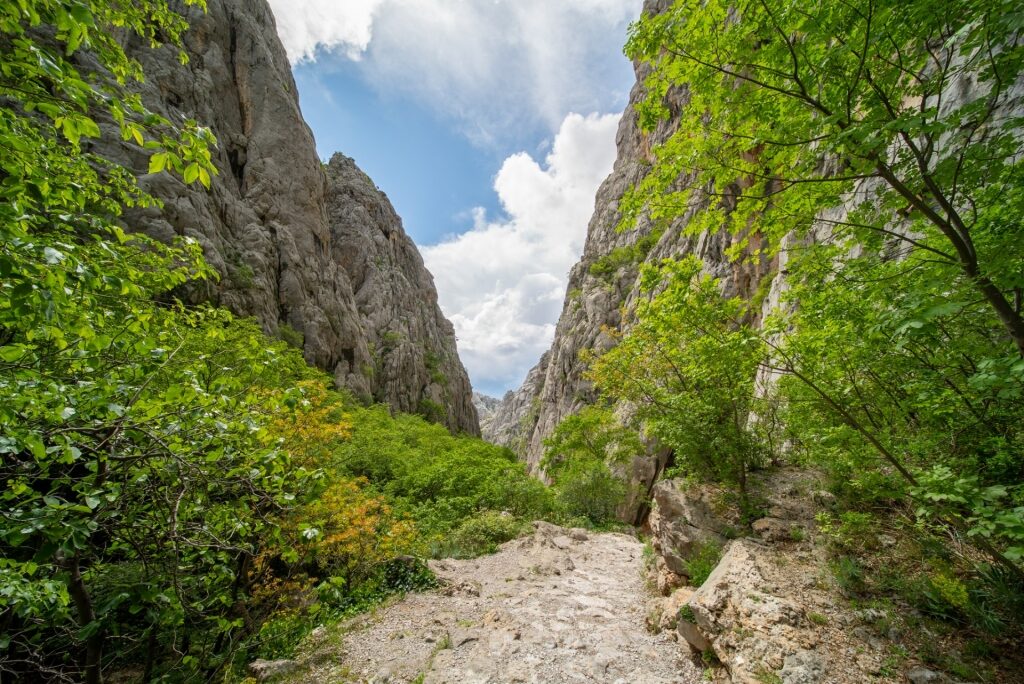
Paklenica National Park
This protected national park features two dramatic canyons—Mala (Small) and Velika (Big)—with craggy, forested-covered peaks and trickling streams interlaced with hiking trails.
A wide range of wildlife inhabits Paklenica, including bats, reptiles, butterflies, and birds.
If you’re up for the challenge, join an eight-mile guided loop, starting in the village of Seline. You’ll ascend through lush meadows towards Anić Kuk, which reaches 1,312 feet and is one of the most famous rock faces in Croatia. Stop at Anica Luka on the route to savor heart-stoppingly beautiful views.
Visit Pag Island
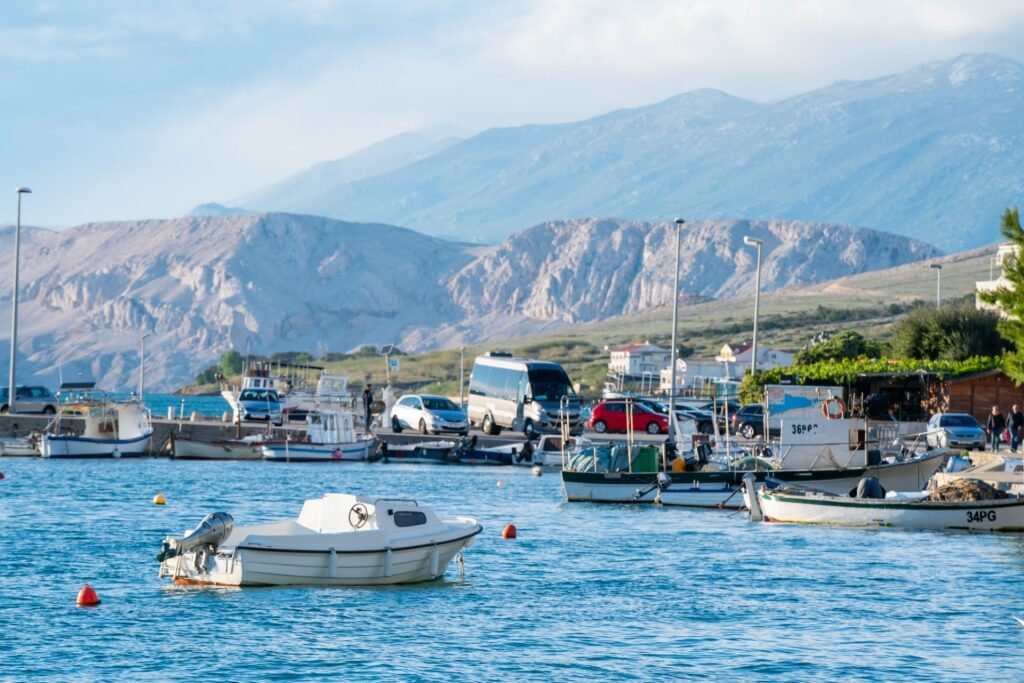
Pag Island
Connected to the mainland by a bridge, Pag is roughly an hour’s drive north of Zadar. The island’s interior is known for its barren landscape, while the coastline is punctuated with attractive coves and inviting beaches that host regular music festivals in summer.
If you’re only on the island for a short visit, head straight for medieval Pag town, with its charming boat-lined waterfront and period architecture. A cluster of notable buildings in the pedestrianized center includes St. George’s Church and the Benedictine Monastery of St. Margaret.
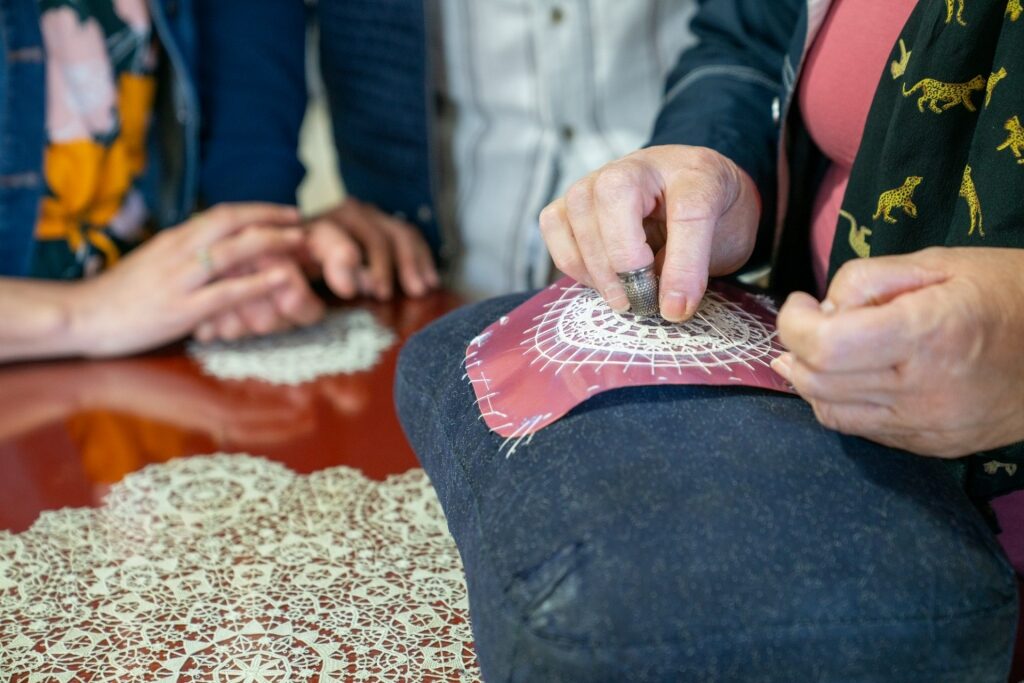
Lace Gallery, Pag Island
It was at St. Margaret’s that nuns began the tradition of fine-thread, decorative lace-making in the 15th century. The custom continues today with Pag lace protected by UNESCO and regarded as the best lace produced in Croatia.
Visit the small Lace Gallery, a museum housed in a restored palace showcasing the history of lace making in Pag, and pick up a pretty design.
Pag has two local delicacies: tender slow-cooked lamb, typically eaten by locals to celebrate a special occasion, and the sheep’s milk Pag cheese, with a robust salty flavor. Stop by Pag’s Siroteka Cheeseshop on Vela Ul, where you’ll find an array of souvenir stores selling local crafts.
Food & Drink
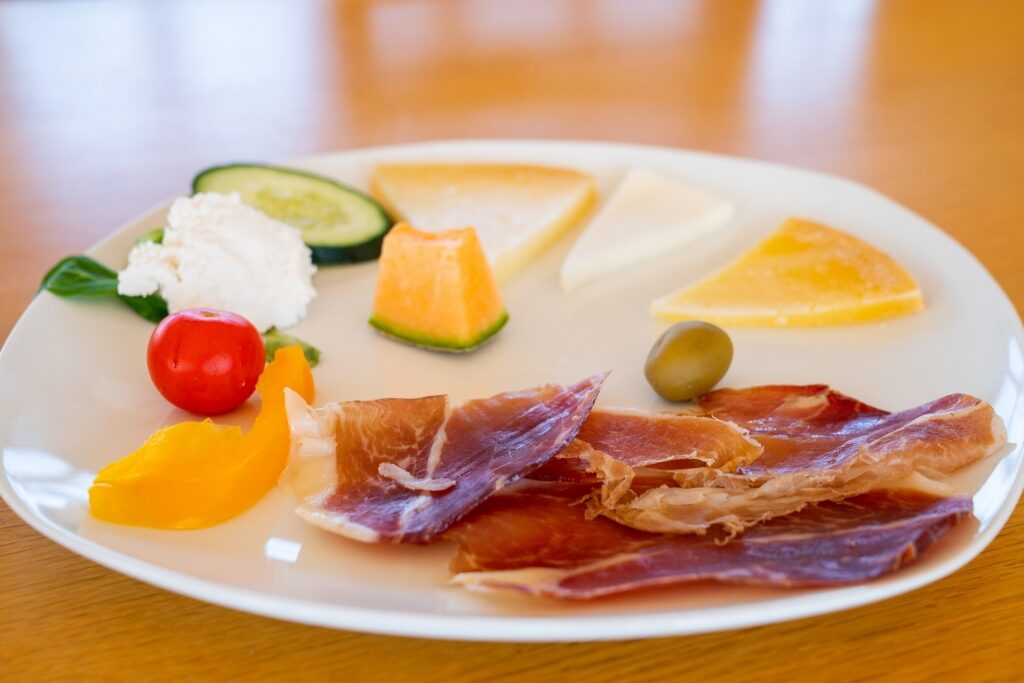
Meat and cheese platter
Fresh Mediterranean flavors influenced by Italy and Greece, complemented by rustic cooking, make Zadar’s Croatian cuisine utterly delightful.
You’ll encounter an array of grilled fish dishes, paprika-flavored meat, seafood, bean stews, and herby flatbreads. It’s all too easy to while away an afternoon with a crisp white wine and a platter of cured ham and salty cheese.
Restaurants typically offer a range of hot and cold appetizers, followed by a selection of seafood and meat entrées.

Pag cheese
Cheeses are popular in Zadar. In addition to Pag cheese, Prgica is a must-try, which you’ll spot for its unique conical shape, produced in the Bilogora-Podravina and Međimurje regions of Croatia.
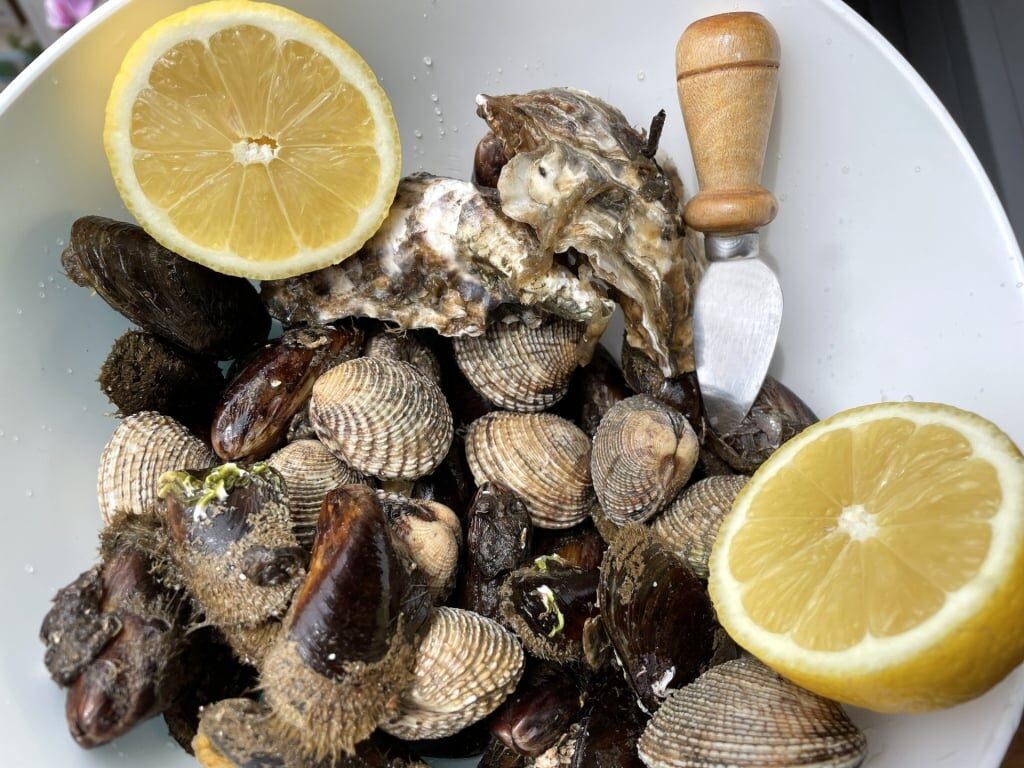
Warty venus
Zadar offers some excellent restaurants, many of them found inside the city’s ancient walls. Break bread at Kornat, a traditional restaurant where the Adriatic squid, European flat oysters, and amusingly named warty venus, a type of saltwater clam, are standout dishes.
Restaurant Groppo, near the looming Cathedral of St. Anastasia, is another big hit for its seafood, including octopus carpaccio, cuttlefish risotto, and the John Dory with Zadar truffles.
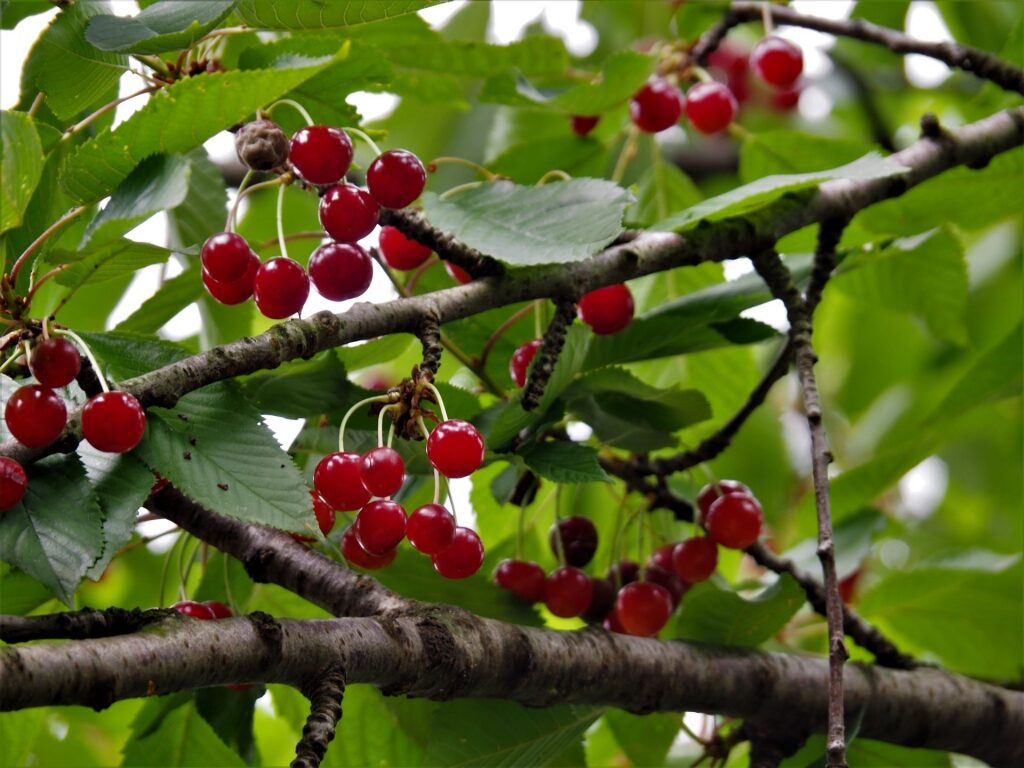
Marasca cherry
Try a Zadar libation of Maraschino, a sweet and slightly sour liqueur produced using distilled Marasca cherries. The cherries are a deep shade of red, grown on this part of the Dalmatian coast. A range of Marasca cherry-based juices are available in cafés and bars.
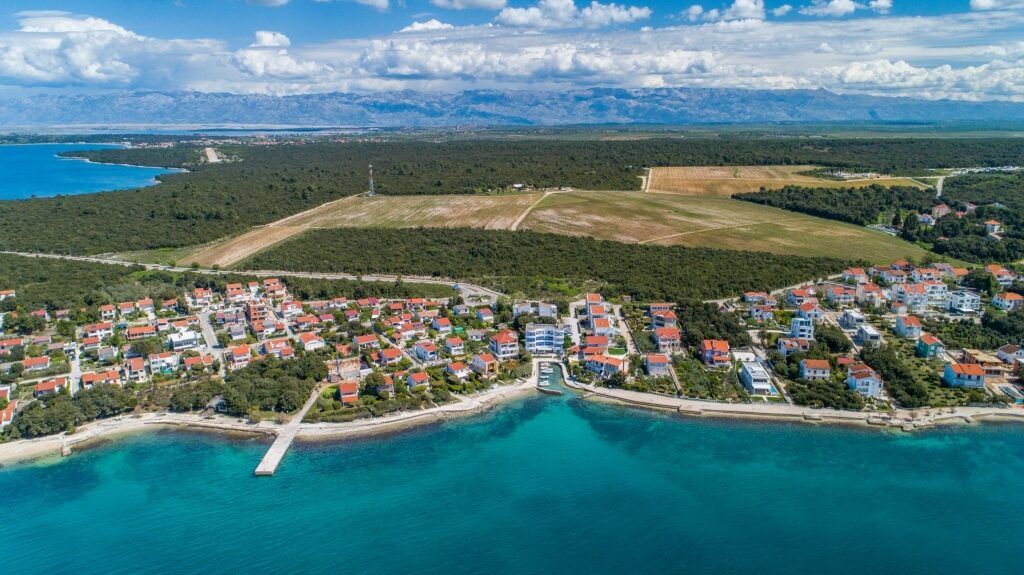
Kraljevski Vinogradi
Wine lovers are in for a treat in Croatia, with a range of indigenous and international grape varieties producing a superior selection of wines here. A selection of vineyards thrive in Zadar County thanks to long, warm summers.

Wine tasting in Kraljevski Vinogradi
Kraljevski Vinogradi (Royal Vineyards) stretches across the hills above Petrčane and Punta Skala. Taste their Pošip dry white wine for a light daytime tipple. Don’t leave without a bottle of Kraljevski Vinogradi’s superb Plavac mali red.
Best Time to Visit Zadar, Croatia
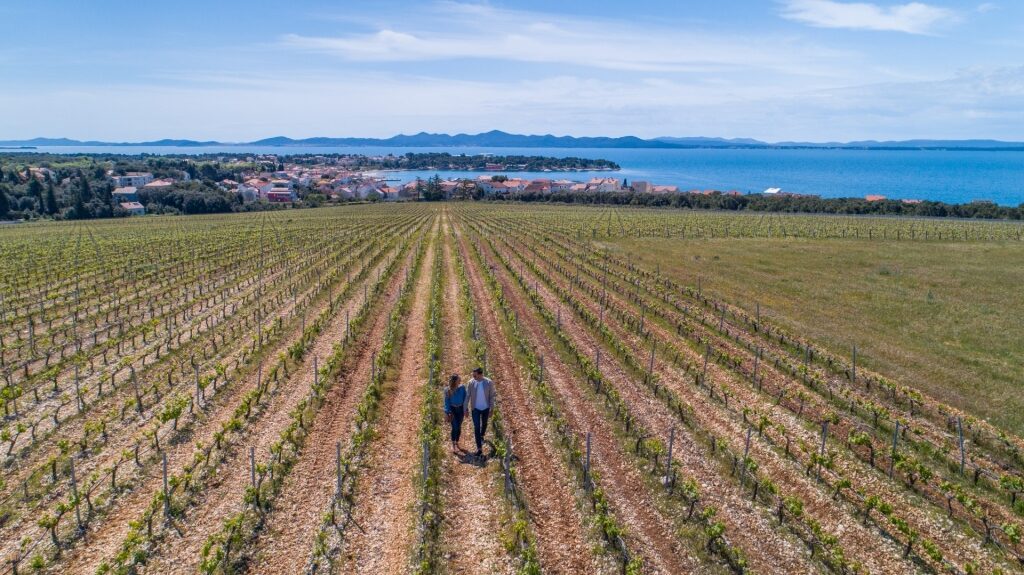
Kraljevski Vinogradi
The best time to visit Zadar is between May and October. There’s very little rainfall from springtime through to fall in this part of the Eastern Mediterranean. If you enjoy pleasantly warm weather that’s not overly hot, aim to visit early or late season, in May, September, or October.
If you want to make the most of your time on the beach, consider June, July, or August, the hottest months of the year.
Read: Best Summer Destinations in Europe
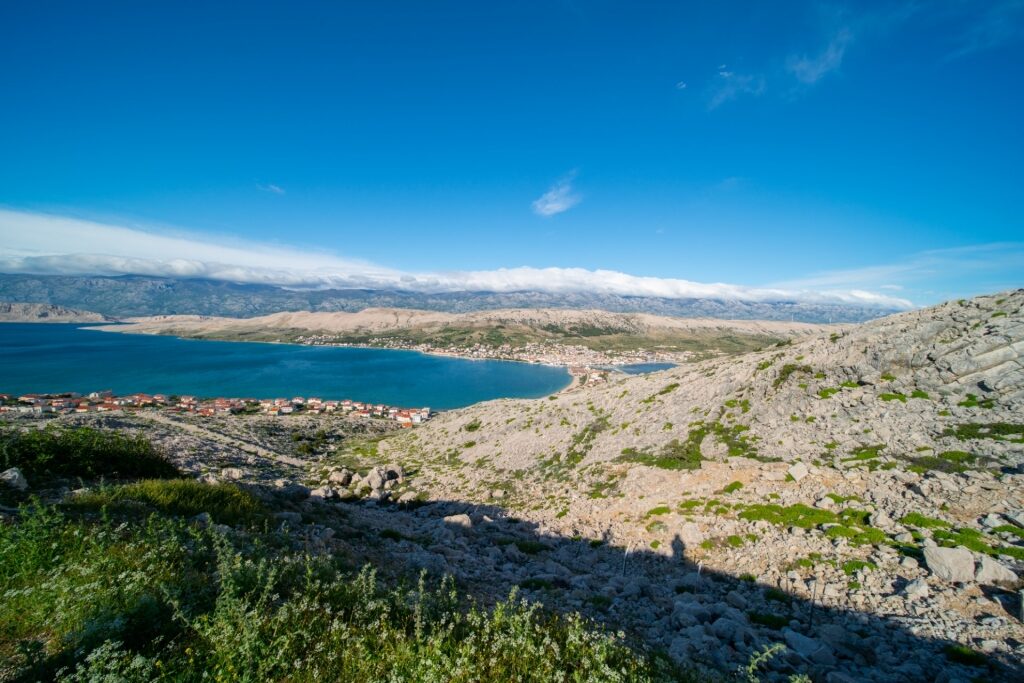
Zadar
Browse our cruises to Zadar to experience its fascinating culture, rich gastronomy, and breathtaking natural landscapes.
